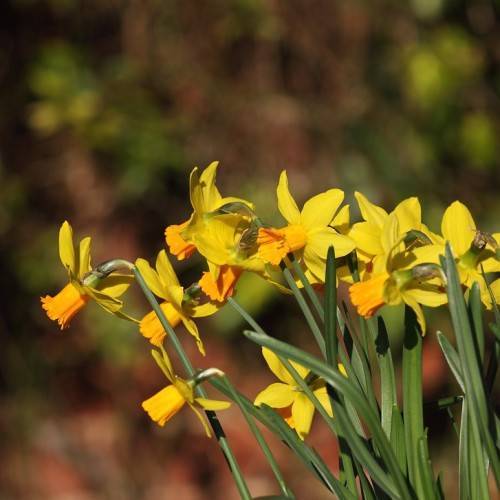
cyclamineus daffodil
Narcissus 'Jetfire'
Cycle:
Perennial
Watering:
Average
Hardiness Zone:
4 - 8
Flowers:
Flowers In Spring
Sun:
Full sun,part shade
Leaf:
Yes
Growth Rate:
High
Maintenance:
Low
Salt Tolerant:
Yes
watering
The cyclamineus daffodil (Narcissus 'Jetfire') is a very hardy and adaptable bulb, and requires minimal care when grown in well-drained soil. It should be planted in autumn to give it enough time to establish before the onset of summer. Watering requirements are minimal, with soil being kept lightly moist in spring and summer and allowed to dry out a bit more in winter. In general, cyclamineus daffodil should be lightly watered on a weekly basis, as too much water can cause the bulbs to rot. If rainfall is scarce, regular watering may be necessary, but the plant should never be allowed to sit in waterlogged soil. Overall, cyclamineus daffodil should receive only light and occasional watering, with a break from watering in early to mid winter when the plant is dormant.
sunlight
Cyclamineus daffodil (Narcissus 'Jetfire') should be grown in an area that receives full sunlight or partial shade for most of the day. The plant will require at least 6 hours of direct sunlight each day in order to thrive. Morning sun is ideal for this type of daffodil as it will help the flowering process and boost photosynthesis, but the plant should be protected from the intense afternoon sun to avoid drying out the soil and foliage. If it is planted in a partially shaded area, make sure it is not too shady and exposed to some direct sunlight each day in order to flower and grow well.
pruning
When it comes to pruning aCyclamineus Daffodil (Narcissus 'Jetfire'), the best time to prune is after flowering has finished and the foliage has begun to yellow. During this time, the flowers and leaves should be cut off with sharp, clean garden shears. Be sure to leave at least 1-third of the foliage intact, to ensure that the plant will have enough energy to store for future duties. Only remove the dead and dying foliage, as this helps to reduce the spread of disease and viruses. Pruning can take place in late fall and early spring, although some gardeners prefer to wait until all danger of a frost has passed before pruning. How much to prune will depend on your desired outcome, as well as the size of the plant. If you are looking for larger blooms, it is best to prune only the oldest foliage, as this will encourage new growth and will help keep the plant looking vibrant. However, if you are seeking more of a dense, closely-knit foliage, pruning back more of the foliage will result in a more full and compact appearance.
